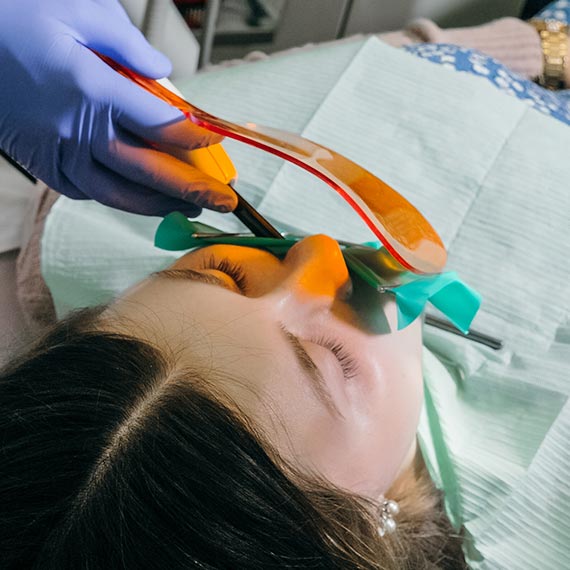Composite Bonding
Composite bonding is a cosmetic procedure that repairs damaged teeth and improves the look of your smile.
Because it usually only takes one visit, composite bonding is a much quicker and more affordable alternative to crowns or veneers.
Book your composite bonding consultation with us at Northbourne Dental Practice in Bournemouth.
Is composite bonding right for you?
To see whether or not composite bonding is right for you, your dentist will need to thoroughly examine your teeth and gums.
While composite bonding can correct problems such as cavities, chipped, cracked, and fractured teeth, gaps and spaces, and discolouration, if the damage is too severe your dentist may recommend you have crowns or veneers instead.
How are the bonds fixed?
Your dentist may first give you an anaesthetic, if the damage to your teeth is extensive. They will then apply a mild acid solution to the surface of the teeth you’re having treated and leave this on for 15 seconds. This creates a strong surface for the bonds to attach to.
Next, the dentist will shape and mould composite resin onto your teeth. They then harden the resin with a high-intensity curing light and repeat this process until your new tooth is the correct size and shape.
Finally, the dentist will apply a finish to make sure the composite is secure.
After a composite bonding treatment, your teeth may feel a little sensitive. This is normal and should not last for more than a day or two.
What is the aftercare process for composite bonding?
To make sure your composite bonds last as long as possible you should maintain a good oral hygiene routine. Make sure you floss your teeth at least once a day and brush them at least twice a day. And visit your dentist and hygienist for regular check-ups.
You should also avoid chewing or biting on hard or sharp objects as these could chip the bonds.
With the right care composite bonds should last for up to ten years.
Book your composite bonding appointment online here or call us on 01202 572 030.


